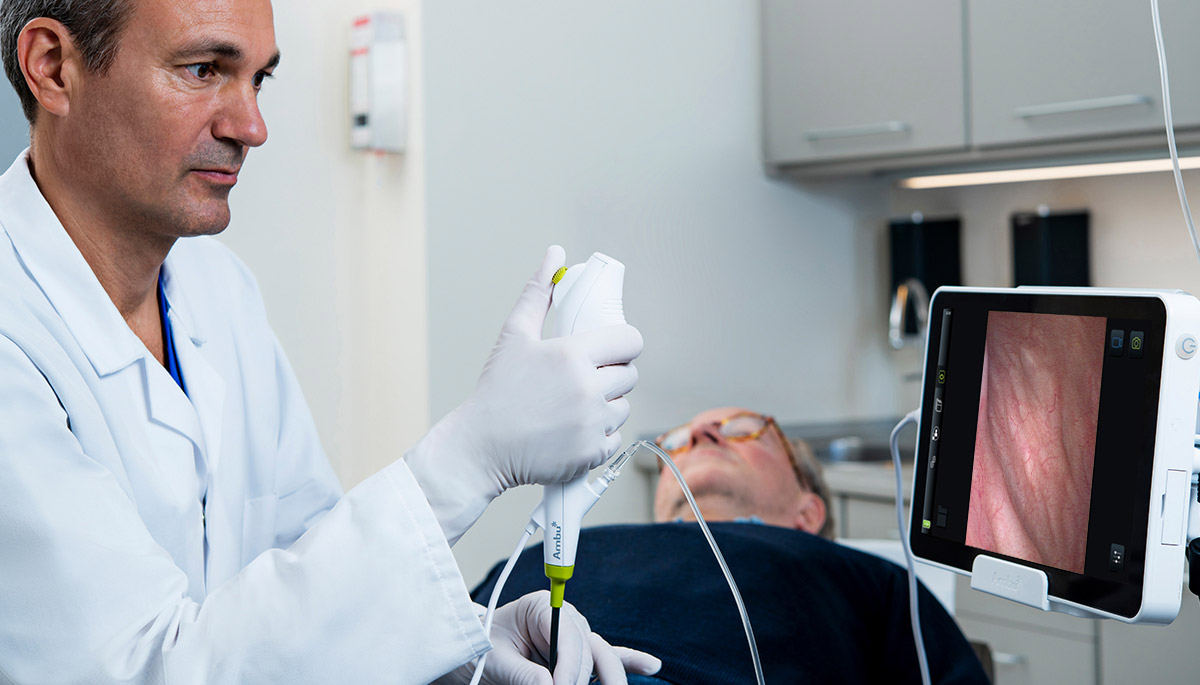Home>Finance>How Much Does An Abdominal Ultrasound Cost Without Insurance?


Finance
How Much Does An Abdominal Ultrasound Cost Without Insurance?
Published: November 6, 2023
Discover the average cost of an abdominal ultrasound without insurance and find financing options to help cover the expenses.
(Many of the links in this article redirect to a specific reviewed product. Your purchase of these products through affiliate links helps to generate commission for LiveWell, at no extra cost. Learn more)
Table of Contents
Introduction
Welcome to the world of abdominal ultrasounds! In this article, we will explore the fascinating realm of abdominal ultrasounds and delve into the financial aspect of these medical imaging procedures. Have you ever wondered how much an abdominal ultrasound would cost without insurance? Well, you’re in the right place.
An abdominal ultrasound is a non-invasive imaging technique that uses high-frequency sound waves to create detailed images of the organs and structures within the abdomen. By generating real-time images, this procedure helps doctors diagnose and monitor various conditions, such as liver disease, gallstones, kidney stones, tumors, and inflammation.
The significance of abdominal ultrasounds cannot be overstated. They provide valuable insights into the health and functioning of vital organs, allowing healthcare professionals to detect abnormalities and guide appropriate treatment plans. With their ability to visualize different tissues and structures, abdominal ultrasounds play a crucial role in identifying and monitoring a wide range of medical conditions.
However, the cost of an abdominal ultrasound can be a concern, especially if you don’t have insurance coverage. The price can vary depending on several factors, including the healthcare facility, geographic location, specific requirements of the procedure, and additional services provided.
In the next sections of this article, we will dive deeper into the factors that influence the cost of an abdominal ultrasound without insurance, explore the average pricing you can expect, and provide insights into where you can find affordable options without compromising on quality. So, let’s get started on this enlightening journey to understand the financial aspects of abdominal ultrasounds without insurance coverage.
What is an abdominal ultrasound?
An abdominal ultrasound is a diagnostic imaging procedure that uses sound waves to create detailed images of the organs and structures within the abdomen. It is a safe and non-invasive method that allows healthcare professionals to examine the liver, gallbladder, pancreas, kidneys, spleen, and other abdominal organs, as well as the blood vessels and lymph nodes in the abdominal area.
The procedure involves the use of a handheld device called a transducer, which emits high-frequency sound waves into the body. These sound waves bounce off the organs and tissues in the abdomen, creating echoes that are captured by the transducer. The echoes are then converted into real-time images on a monitor, allowing the healthcare provider to visualize and evaluate the internal structures.
Abdominal ultrasounds offer several advantages over other imaging techniques. They are painless, do not involve exposure to ionizing radiation, and can be performed quickly, with real-time imaging allowing for immediate evaluation of the organs. This makes them particularly useful in emergency situations or when repeated monitoring is necessary.
During the abdominal ultrasound procedure, you may be asked to lie down on an examination table, and a gel will be applied to your abdomen to help the transducer make better contact with your skin. The healthcare professional will then move the transducer over the area of interest, capturing different angles and views to obtain a comprehensive assessment of the abdominal organs and structures.
The images produced by an abdominal ultrasound provide valuable information to healthcare providers. They can help diagnose various conditions, including but not limited to:
- Liver diseases, such as cirrhosis or fatty liver
- Gallstones or other problems with the gallbladder
- Kidney stones or kidney infections
- Pancreatitis or other pancreatic disorders
- Abdominal tumors or cysts
- Inflammation or infection in the abdominal organs
Abdominal ultrasounds are commonly performed in hospitals, clinics, and diagnostic imaging centers by trained ultrasound technicians or radiologists. They are an important tool in the diagnostic process, allowing healthcare professionals to visualize and assess the health of the abdominal organs without the need for invasive procedures. Now, let’s explore the factors that influence the cost of an abdominal ultrasound without insurance coverage.
Importance of abdominal ultrasounds
Abdominal ultrasounds play a crucial role in modern healthcare by providing valuable information for diagnosis, monitoring, and treatment planning. Here are some key reasons why abdominal ultrasounds are important:
- Non-invasive and safe: One of the biggest advantages of abdominal ultrasounds is that they are non-invasive and do not involve ionizing radiation. This makes them a safe option for patients, especially those who may not be suitable candidates for other imaging techniques like CT scans or MRIs.
- Diagnosis of various conditions: Abdominal ultrasounds are used to diagnose a wide range of conditions affecting the abdominal organs. They can help detect liver diseases, gallstones, kidney stones, pancreatic disorders, abdominal tumors, and more. By providing detailed images, abdominal ultrasounds assist healthcare professionals in accurately identifying these conditions and determining appropriate treatment plans.
- Monitoring and follow-up: Abdominal ultrasounds are also valuable for monitoring the progress of treatment or the progression of a disease. They allow healthcare providers to assess changes in size, shape, or appearance of organs or structures over time. This is particularly important for conditions like liver cirrhosis, where regular monitoring is necessary to evaluate disease progression and guide treatment decisions.
- Guiding procedures: Abdominal ultrasounds are often used to guide minimally invasive procedures, such as biopsies or drainages. The real-time imaging capabilities of ultrasounds help healthcare professionals visualize the targeted area and precisely place needles or catheters for accurate diagnosis or treatment.
- Pregnancy monitoring: Abdominal ultrasounds are commonly used during pregnancy to monitor fetal development. They allow expectant parents and healthcare providers to track the health and growth of the fetus, detect any abnormalities, and ensure a smooth pregnancy journey.
Abdominal ultrasounds have revolutionized the field of diagnostic medicine, providing a non-invasive and informative tool for healthcare professionals. Their importance in detecting and monitoring various abdominal conditions cannot be overstated. Now, let’s explore the factors that affect the cost of an abdominal ultrasound without insurance coverage.
Factors Affecting the Cost of an Abdominal Ultrasound without Insurance
The cost of an abdominal ultrasound without insurance can vary significantly depending on several factors. It is important to understand these factors in order to better manage your healthcare expenses. Here are some key factors that can influence the cost:
- Healthcare facility: The type of healthcare facility where you get the abdominal ultrasound can impact the cost. Hospitals and larger medical centers tend to have higher fees compared to independent clinics or imaging centers. This is because hospitals have higher overhead costs and may use more advanced equipment.
- Geographic location: The cost of medical services can vary depending on your geographic location. Areas with a higher cost of living or higher healthcare expenses tend to have higher prices for abdominal ultrasounds. It is important to research and compare prices in your specific area to find the most affordable options.
- Additional services: If additional services are required during the abdominal ultrasound, such as a Doppler ultrasound to evaluate blood flow or a contrast-enhanced ultrasound, the cost may increase. These additional services provide more detailed and specific information but come at an additional expense.
- Provider’s expertise and reputation: The expertise and reputation of the healthcare provider performing the abdominal ultrasound can affect the cost. Providers with specialized training or extensive experience may charge higher fees for their services.
- Insurance discounts: While you specifically mentioned the cost without insurance coverage, it’s worth noting that some healthcare facilities offer discounts for patients with insurance. If you do have insurance, it is recommended to check for any negotiated rates or discounts available through your insurance provider.
It is important to note that the cost of an abdominal ultrasound without insurance can vary significantly between different healthcare facilities and providers. It is always a good idea to inquire about the price upfront and compare quotes from multiple providers to ensure you are getting the best value for your money.
In the next section, we will explore the average cost of an abdominal ultrasound without insurance, which can serve as a starting point for understanding the financial implications of this procedure.
Average Cost of an Abdominal Ultrasound without Insurance
The cost of an abdominal ultrasound without insurance can vary depending on various factors, as mentioned in the previous section. However, to give you a general idea of the potential expenses, let’s explore the average cost range for an abdominal ultrasound without insurance coverage.
On average, the cost of an abdominal ultrasound without insurance can range from $200 to $500. This price range is an estimate and can vary depending on the factors mentioned earlier, such as the specific healthcare facility, geographic location, and additional services required.
It is important to keep in mind that this is a general estimate, and the actual cost may differ significantly based on individual circumstances. Prices can also vary based on the complexity of the ultrasound scan and the expertise of the healthcare provider performing the procedure.
If you require additional services such as Doppler ultrasounds or contrast-enhanced ultrasounds, the cost can increase further. These services provide more detailed information and may involve the use of specialized equipment or contrast agents, which can contribute to higher expenses.
It is always advisable to contact different healthcare facilities in your area and inquire about their specific pricing for an abdominal ultrasound without insurance. Some facilities may offer discounted rates or payment plans for individuals without insurance coverage to make the procedure more affordable.
While the cost of an abdominal ultrasound without insurance can seem significant, it is important to prioritize your health and seek appropriate medical care. In some cases, delaying necessary medical procedures or tests can lead to complications or delayed diagnoses, which can have far greater consequences in terms of both health and financial implications.
Now that we have explored the average cost range, let’s move on to the next section, where we will discuss options for obtaining an affordable abdominal ultrasound without insurance coverage.
Where to Get an Affordable Abdominal Ultrasound without Insurance
If you’re in need of an abdominal ultrasound but don’t have insurance coverage, there are several options available to help you obtain this important medical imaging procedure at an affordable cost. Here are some suggestions:
- Community health clinics: Community health clinics often provide healthcare services at reduced rates for individuals without insurance. These clinics focus on serving underserved populations and may offer discounted fees or sliding scale payment options based on income. Contact local community health clinics in your area to inquire about their ultrasound services.
- Diagnostic imaging centers: Independent diagnostic imaging centers may offer competitive prices for abdominal ultrasounds without insurance. These centers specialize in various imaging procedures and often have lower overhead costs compared to hospitals, which can translate into more affordable prices for patients. It is worth contacting multiple centers to compare prices and services offered.
- Research or teaching hospitals: Research or teaching hospitals often conduct clinical trials or research studies that require participants to undergo abdominal ultrasounds. In some cases, these hospitals may offer free or significantly discounted ultrasounds as part of their research programs. Contact local research or teaching hospitals to inquire about any ongoing studies or programs that may provide access to affordable ultrasounds.
- Non-profit organizations: Some non-profit organizations or charitable foundations may offer financial assistance or grants to individuals who cannot afford necessary medical procedures. These organizations aim to ensure that everyone has access to essential healthcare services. Research and reach out to relevant non-profit organizations in your area to inquire about potential assistance for obtaining an affordable abdominal ultrasound.
- Negotiate with healthcare providers: Don’t be afraid to ask healthcare providers about potential discounts, payment plans, or negotiable fees. Some providers may be willing to work with you to find a more affordable solution, especially if you explain your financial situation and the need for the procedure. Remember, it never hurts to ask, and many providers understand the challenges of healthcare costs.
Remember, affordability does not mean compromising on quality. It is important to investigate the reputation and credentials of the healthcare facility or provider offering the abdominal ultrasound. Look for certified and experienced technicians or radiologists who can ensure accurate and reliable results.
Additionally, consider reaching out to local healthcare advocacy organizations or social workers who can provide guidance and resources for affordable healthcare options in your area. They may be familiar with local programs or initiatives aimed at assisting individuals without insurance.
By utilizing these resources and exploring different options, you can increase your chances of finding an affordable abdominal ultrasound without insurance coverage. Prioritizing your health is important, and there are avenues available to help you access the necessary medical care.
Conclusion
An abdominal ultrasound is a valuable diagnostic tool that provides detailed images of the organs and structures within the abdomen. While the cost of an abdominal ultrasound without insurance coverage can be a concern, there are options available to make it more affordable.
Factors such as the healthcare facility, geographic location, additional services required, and provider expertise can influence the cost of an abdominal ultrasound. The average range for an abdominal ultrasound without insurance is typically between $200 and $500, but prices may vary.
To obtain an affordable abdominal ultrasound without insurance, consider exploring community health clinics, independent diagnostic imaging centers, research or teaching hospitals, and non-profit organizations that may offer discounted or low-cost options. Additionally, don’t hesitate to negotiate with healthcare providers and inquire about potential discounts or payment plans.
Remember, prioritizing your health is important. While the cost of an abdominal ultrasound without insurance may seem significant, it is crucial to seek the necessary medical care to ensure timely diagnoses and appropriate treatment plans.
By researching and reaching out to various resources, you can find affordable options for your abdominal ultrasound without compromising on quality. Utilize community resources, seek out financial assistance programs, and be proactive in exploring different healthcare facilities to find the best solution for your needs.
Ultimately, the financial aspect should not deter individuals from obtaining essential medical procedures. Take charge of your health by exploring affordable options, communicating with healthcare providers, and utilizing available resources to access the abdominal ultrasound you need.














